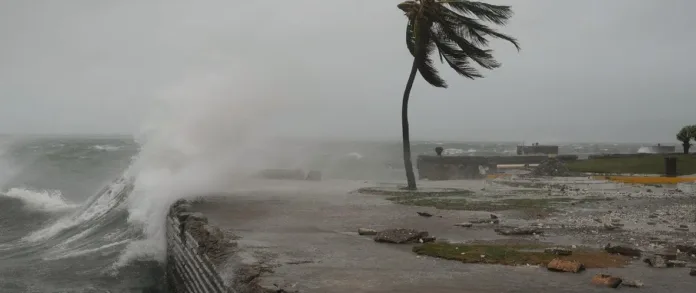Category 5 storm leaves Jamaica flooded, cutting power to 530,000 and killing at least three
Hurricane Melissa has battered Jamaica with torrential rain, landslides and destructive winds, leaving hundreds of thousands without power in what officials have called one of the most powerful storms ever to hit the Caribbean.
The storm made landfall late on Tuesday in the western parish of Westmoreland as a Category 5 hurricane before weakening slightly to Category 4 as it moved inland. Authorities described it as the “storm of the century”, with Jamaica’s southwestern parishes among the worst hit.
Flooding has inundated towns and villages across St Elizabeth, which officials said was “underwater”, while nearby parishes including St Thomas, Portland and St Catherine also suffered extensive damage. Fallen trees, landslides and collapsed bridges have blocked key roads and cut off remote communities, complicating rescue and relief efforts.
Desmond McKenzie, deputy chairman of Jamaica’s Disaster Risk Management Council, said emergency teams were responding to calls for help in isolated areas. “St Elizabeth is the bread basket of the country, and that has taken a beating. The entire Jamaica has felt the brunt of Melissa,” he said.
He added that the island’s infrastructure had been “severely compromised”, describing the hurricane as one of the most damaging events in the nation’s history. “Jamaica’s gone through what I can call one of its worst periods,” he said.
Police commander Eron Samuels said the hurricane had caused “a lot of chaos” for local officers, with flying debris and flooding hindering rescue operations.
At least three people were confirmed dead in Jamaica before the storm’s centre reached the island. Three more fatalities were reported in Haiti and one in the Dominican Republic, where another person remains missing.
Jamaica’s Prime Minister, Andrew Holness, urged citizens to follow evacuation orders and said recovery efforts would begin immediately once conditions allowed. “Hurricane Melissa is a powerful Category 5 storm posing a serious threat to the lives and livelihoods of Jamaicans,” he said. “In its aftermath, recovery will take every helping hand. Together, let us stand ready to help families rebuild homes and restore livelihoods once the storm passes.”
More than 530,000 people were left without electricity, and officials said it could take several days to restore power in some areas. All airports were closed as the hurricane struck, and 850 emergency shelters were opened across the island to house more than 20,000 people.
According to the US National Hurricane Center, Hurricane Melissa had a minimum central pressure of 892 millibars at its peak — making it one of the most intense Atlantic hurricanes ever recorded, stronger even than Hurricane Katrina in 2005. Only two other Atlantic storms have had lower pressure readings.
The UK’s Foreign, Commonwealth and Development Office (FCDO) said it had activated a crisis centre to support the roughly 5,000 British nationals believed to be in Jamaica. The Royal Navy vessel HMS Trent is already stationed in the region on standby to assist relief efforts.
Foreign Secretary Yvette Cooper said the UK was “closely tracking the impact of Hurricane Melissa” and would provide help if requested. “Many people will be thinking about family and friends in Jamaica in the face of this very serious storm. We offer the UK’s full support,” she said.
Cuba is now bracing for the storm’s impact, with officials ordering the evacuation of more than 600,000 people from the island’s eastern provinces, including the city of Santiago. The hurricane is forecast to turn northeast on Wednesday, threatening the southeastern Bahamas by evening, where hurricane warnings have been issued.
Melissa’s intensity has reignited concern among climate scientists, who warn that rising ocean temperatures are fuelling more powerful and unpredictable Atlantic storms.
